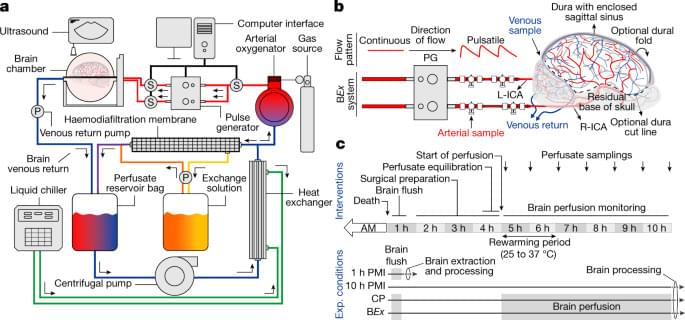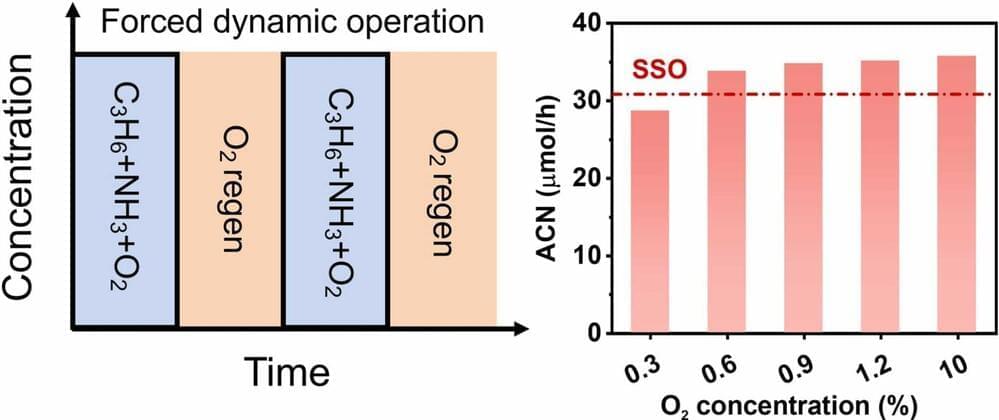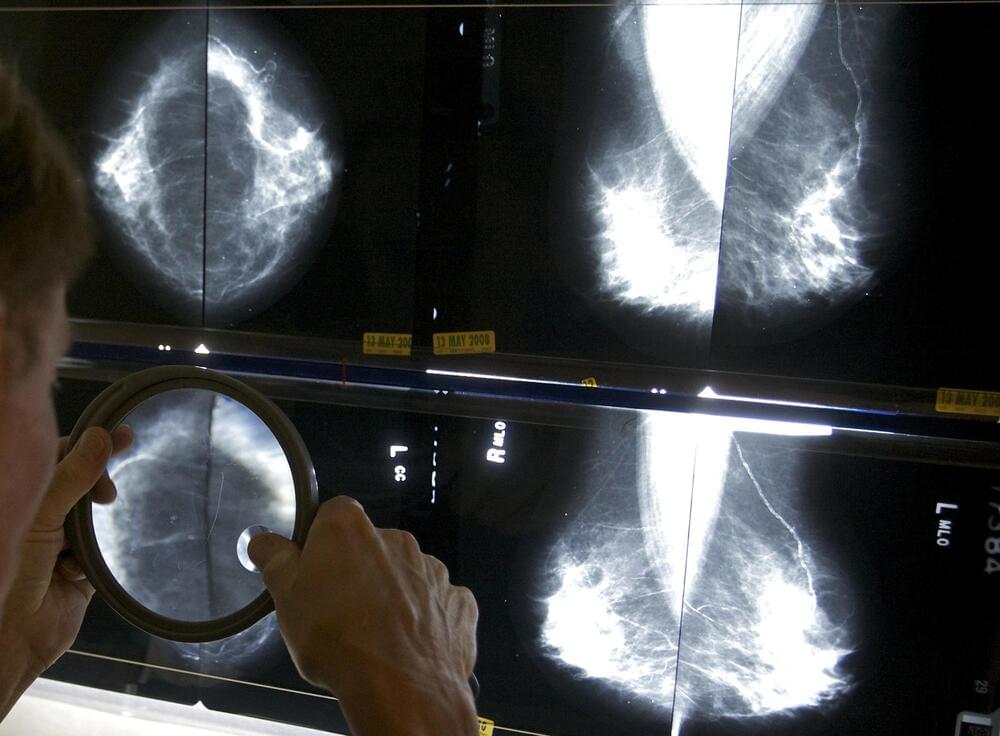A specialized technology can restore and preserve microcirculation and cellular functions hours post-mortem in an isolated pig brain.



A team of engineers is reimagining one of the essential processes in modern manufacturing. Their goal? To transform how a chemical called acrylonitrile (ACN) is made—not by building world-scale manufacturing sites, but by using smaller-scale, modular reactors that can work if they let the catalyst, in a sense, “breathe.”
Their article, titled “Propene Ammoxidation over an Industrial Bismuth Molybdate-Based Catalyst Using Forced Dynamic Operation,” is published in Applied Catalysis A: General.
ACN is everywhere, from carbon fibers in sports equipment to acrylics in car parts and textiles. Traditionally, producing it requires a continuous, energy-intensive process. But now, researchers at the University of Virginia and the University of Houston have shown that by pausing to “inhale” fresh oxygen, a chemical catalyst can produce ACN more efficiently. This discovery could open the door to smaller, versatile production facilities that adapt to fluctuating needs.


Finding a reasonable hypothesis can pose a challenge when there are thousands of possibilities. This is why Dr. Joseph Sang-II Kwon is trying to make hypotheses in a generalizable and systematic manner.
Kwon, an associate professor in the Artie McFerrin Department of Chemical Engineering at Texas A&M University, published his work on blending traditional physics-based scientific models with experimental data to accurately predict hypotheses in the journal Nature Chemical Engineering.
Kwon’s research extends beyond the realm of traditional chemical engineering. By connecting physical laws with machine learning, his work could impact renewable energy, smart manufacturing, and health care, outlined in his recent paper, “Adding big data into the equation.”
The Call is still open on senescence in brain aging and Alzheimers disease!
Submit your paper today! 📩
Understanding Senescence in Brain Aging and Alzheimer’s Disease
Guest Editors Drs. Julie Andersen and Darren Baker, Associate Editor Dr. Anna Csiszar and Editor-in-Chief Dr. Zoltan Ungvari, and the editorial team of GeroScience (Journal of the American Aging Association; 2018 Impact Factor: 6.44) invite submission of original research articles, opinion papers and review articles related to research focused on understanding the role of senescence in brain aging and in Alzheimer’s disease. Senescent cells accumulate in aging and pathological conditions associated with accelerated aging. While earlier investigations focused on cellular senescence in tissues and cells outside of the brain (e.g. adipose tissue, dermal fibroblasts, cells of the cardiovascular system), more recent studies started to explore the role of senescent cells in age-related decline of brain function and the pathogenesis of neurodegenerative disease and vascular cognitive impairment. This call-for-papers is aimed at providing a platform for the dissemination of critical novel ideas related to the functional and physiological consequences of senescence in diverse brain cell types (e.g., oligodendrocytes, pericytes, astrocytes, endothelial cells, microglia, neural stem cells), with the ultimate goal to identify novel targets for treatment and prevention Alzheimer’s disease, Parkinson’s disease and vascular cognitive impairment. We welcome manuscripts focusing on senescent-cell-targeting mouse models, the role of paracrine senescence, senescence pathways in terminally differentiated neurons, the pleiotropic effects of systemic senescence, the role of senescence in neuroinflammation and the protective effects of senolytic therapies. We are especially interested in manuscripts exploring the causal role of molecular mechanisms of aging in induction of cellular senescence as well as links between lifestyle (e.g., diet, exercise, smoking), medical treatments (e.g. cancer treatments), exposure environmental toxicants and cellular senescence in the brain. We encourage submission of manuscripts on developing innovative strategies to identify and target senescent cells for prevention/treatment of age-related diseases of the brain. Authors are also encouraged to submit manuscripts focusing on translational aspects of senescence research.
All manuscripts accepted from this Call for Papers will be included in a unique online article collection to further highlight the importance of this topic. All manuscripts should be submitted online here: https://www.editorialmanager.com/jaaa/default.aspx.
- is focusing on the role of molecular mechanisms of aging in the pathogenesis of cardiovascular diseases, COVID19, hypertension, obesity and vascularhomeostasis. ‘ + Read more in the comments and submit📧 at the link⬇
Cell Biology of Vascular Aging.
Guest Editors: Prof. Zoltan Arany, Prof. Jalees Rehman and Prof. Gabor Csanyi.
Deputy Editor Dr. Stefano Tarantini and Editor-in-Chief Dr. Zoltan Ungvari, and the editorial team of GeroScience (Official Journal of the American Aging Association, published by Springer) invite submission of original research articles, opinion papers and review articles related to research focused on understanding the mechanisms involved in vascular aging, the factors promoting accelerated aging in vascular cells and the role of vascular cells in the pathogenesis of age-related diseases. This call-for-papers is aimed at providing a platform for the dissemination of critical novel ideas related to the mechanisms of vascular aging as well as mechanisms related to key phenotypes of vascular aging including.

Some early breast cancer patients can safely avoid specific surgeries, according to two studies exploring ways to lessen treatment burdens.
One new study, published in the New England Journal of Medicine, examines whether removing lymph nodes is always necessary in early breast cancer. Another in the Journal of the American Medical Association suggests a new approach to a type of breast cancer called ductal carcinoma in situ, or DCIS.
The research was discussed Thursday at the San Antonio Breast Cancer Symposium.

A study in mice has found that maternal gut microbiome composition during pregnancy has long-term effects on offspring stem cell growth and development. The researchers, headed by Parag Kundu, PhD, at the Institut Pasteur of Shanghai-Chinese Academy of Sciences, found that treating pregnant mice with the common gut microbe Akkermansia muciniphila resulted in offspring that had more active stem cells in both the brain and intestinal tract. As a result the offspring were less anxious and recovered quicker from colitis, and these differences were still evident at 10 months of age.
The team showed that Akkermansia muciniphila impacted stem cell growth by altering the abundance of other gut microorganisms and increasing the microbial production of metabolites that cross the placenta and induce stem cell growth and proliferation. Exposing offspring to the bacterium after birth did not result in the same stem cell activation.
“This is a major advancement in developing microbiota-based intervention strategies to improve child health,” said Kundu, who is senior author of the team’s published paper in Cell Stem Cell, titled “Maternal gut microbiota influence stem cell function in offspring.” In their report the team stated, “These results suggest a fundamental role of the maternal microbiome in programming offsprings’ stem cells and represent a promising target for interventions.”

It is quite conventional that the working of classical computers is affected immensely by heat and one might have come across this situation in their lives when their computer failed to function properly due to excessive heating.
But what about quantum computers? Do thermodynamical factors influence the workings of a quantum computing device? Well, the answer is yes, quantum computers operate using quantum bits or qubits that essentially are in a superposed state exchanging information in binary code. An interesting fact about qubits is that they not only exchange information using 0 and 1 but also intermediate values between 0 and 1. These qubits are very sensitive, in that excessive heat generation could cause work-related defects which in a sense can cause harm to the device as a whole. Another crucial point is that in order to retrieve significant information from the qubit system, the associated quantum states must be dismantled and this could possibly impact the quantum system heavily in a negative manner as the process would be exothermic.
In recent work, physicists have investigated the thermodynamic effects caused by superconducting quantum systems [1]. The method involves the employment of a Josephson junction which essentially operates on the Josephson effect, an example of macroscopic quantum phenomena wherein a supercurrent flows between two superconductors placed end-to-end or in close proximity to each other. The principal usability of a Josephson junction is to store quantum information. Using superconductors is a plus because it helps enhance the efficiency of the qubits.

An Iranian cosmologist has recently suggested another way we could look for extraterrestrial life in our universe. Could it be, he wonders in a new paper (which appears now on the preprint site arXiv), that these advanced alien civilizations are using Dyson spheres around primordial black holes as a way to gather energy? And, if so, how could we look for the signs? His work makes some big assumptions that may not be justified, but this specific type of cosmology has always been a little far out—and it’s where the biggest insights can sometimes lie.
Shant Baghram is a physicist at the Sharif University of Technology in Tehran. His new paper, which is an unusual solo work in a long career of collaboration with colleagues and graduate students, is a quick-and-dirty introduction to ideas like SETI (the Search for Extraterrestrial Intelligence), the Drake equation, and the Dyson sphere—all hallmarks of those who theorize about alien civilizations.